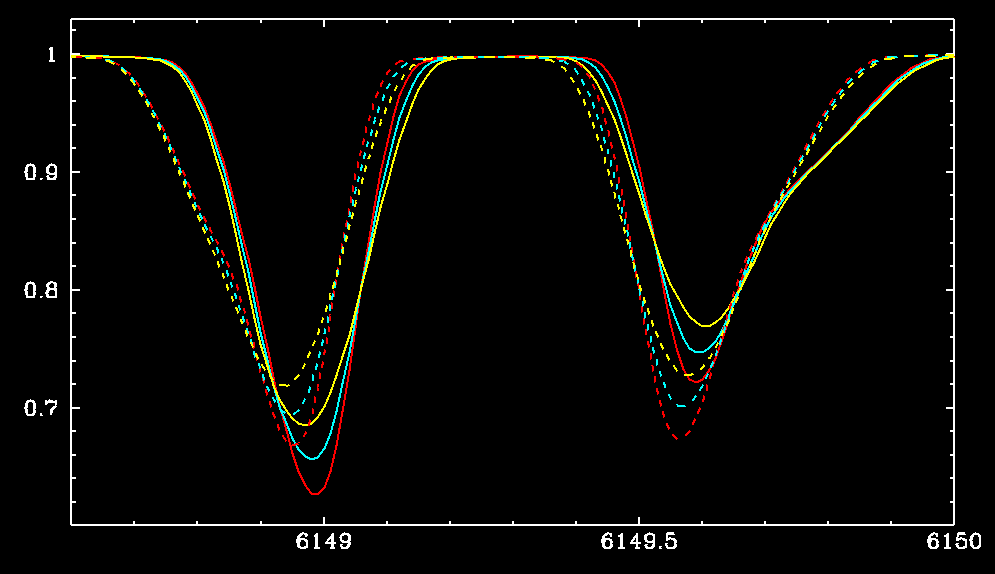
The Paschen-Back effect
in stellar Stokes spectra
modelled thanks to Ada

A
concise explanation of the basic physical facts by Prof. Egidio Landi
Degl'Innocenti
Let us consider a term of an atom,
characterised by the quantum numbers L and S. The term is composed of
2S+1 (or 2L+1 if L < S) J-levels whose energy separation is due to
the spin-orbit interaction. When a weak magnetic filed is present, each
J-level splits into 2J+1 magnetic sublevels that can be identified by
the further quantum number M. In as far as the magnetic splitting is
much lower than the fine-structure separation between different
J-levels, such splitting turns out to be proportional to the magnetic
field, and the atom is said to be in the Zeeman effect regime. However, when the magnetic field starts
to be comparable, or even larger than the fine-structure separation
between J-levels, the linearity property is lost and the atom enters
the regime of the (incomplete)
Paschen-Back effect. Here the
situation is more complicated because the quantum number J is no longer
a good quantum number and the atomic levels can thus be characterised
only by the magnetic quantum number M, not by J.
Multi-processor
and/or multi-core architectures in conjunction with modifications to
the object-oriented and parallel COSSAM code (Stift 2000) have
made it possible - since early 2006 - to model stellar Stokes spectra
in the incomplete Paschen-Back regime. The new CossamPaschen code
calculates (for realistic stellar atmospheres) detailed Stokes spectra
of a multiplet in the incomplete Paschen-Back regime, with full
blending from the remaining lines included, assuming classical
anomalous Zeeman patterns for the latter. Provision is made both for
the solar case and the stellar case (adopting an Oblique Rotator Model
with a decentred dipole magnetic geometry).
During the CP#AP workshop in Vienna in September 2007 I showed high
resolution Stokes profiles of the FeII lines at 6147 and 6149 in
strongly magnetic Ap stars, synthethised for various Oblique Rotator
models, and illustrating the asymmetries and line-shifts
introduced by the incomplete Paschen-Back effect. It was the first time ever that stellar
Stokes
profiles - correctly integrated over the visibile hemisphere, with an
accurate formal solution to the polarised equation of radiative
transfer in a realistic stellar atmosphere - of any spectral line
subject to the PB effect have been presented.
Here is a nice illustration
of
the Paschen-Back effect

Oblique Rotator Models with H_s = 14500 Gauss
red: 3 km/s
full lines :
Paschen-Back
cyan: 4 km/s
yellow: 5 km/s
dashed lines : Zeeman
Note the conspicuous shifts between Zeeman and Paschen-Back profiles
We find very slight asymmetries due to
rotation in the Zeeman regime.
These asymmetries are much stronger in the Paschen-Back regime.
 Back to the Ada in Astrophysics Homepage
Back to the Ada in Astrophysics Homepage
![]()
